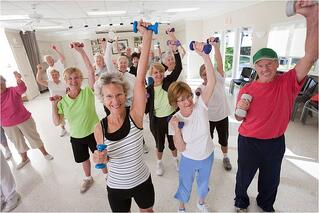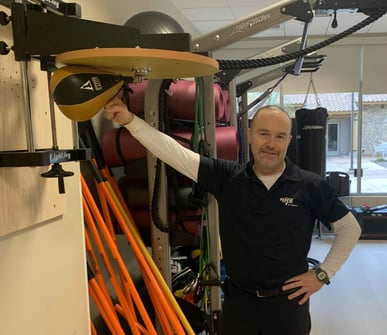 Training elements from boxing have become very popular in the active aging segment of the population so it stands to reason that it would be a great training element to include in a senior living fitness program. The benefits when done correctly are immense and include improved balance, cardiovascular fitness, strength, agility as well as hand-eye coordination which translate very well to the functional demands of advancing age. Training methods should concentrate on balance, safety, (lots of water breaks and watch for overexertion,) and most of all….fun! Incorporating boxing into existing group fitness classes or implementing a low impact cardio kickboxing class is a great way to jazz up your group fitness calendar for residents and it is particularly beneficial for residents with Parkinson’s Disease.
Training elements from boxing have become very popular in the active aging segment of the population so it stands to reason that it would be a great training element to include in a senior living fitness program. The benefits when done correctly are immense and include improved balance, cardiovascular fitness, strength, agility as well as hand-eye coordination which translate very well to the functional demands of advancing age. Training methods should concentrate on balance, safety, (lots of water breaks and watch for overexertion,) and most of all….fun! Incorporating boxing into existing group fitness classes or implementing a low impact cardio kickboxing class is a great way to jazz up your group fitness calendar for residents and it is particularly beneficial for residents with Parkinson’s Disease.
Boxing teaches a can-do spirit and instills a level of resiliency that can help those facing difficult tasks, including coming back from injury or sickness. Even though the sport of boxing is an individual one, the camaraderie and community associated with the training is ideal for building social ties and the sense of accomplishing something difficult as a group. The saying that “it’s not how many times you get knocked down but how often you get up!” is universally understood and applicable to almost everyone. Not sure how to get started? Check out the suggested progression below!
- Shadowboxing in the mirror is the best way to begin a workout as it encompasses all the techniques involved in boxing training and gives one instant feedback on how they are progressing. Teaching certain combinations like jab, cross, hook and so forth will also engage the memory and will be entertaining to the class or individual as they try to follow along. Shadowboxing is also great to do first as it is a nice low-impact workout. 30 seconds on with a 30 second break then repeat.
- Next, work on a strength element like static squats and wall push-ups to allow for a recovery of the cardiovascular system. 30 seconds for the static squat/ 30 second break and 30 seconds of wall push-ups followed by a 30 second break.
- Hand/Eye coordination is next and can be done on a speedbag, double-end bag or even playing catch with a pickleball. 30 seconds on, 30 second break.
- After that, working with a heavy bag will develop strength and balance. Hand wraps and appropriate gloves should always be used with this type of work. Those looking for a softer impact can barely ‘tap’ the bag and focus more on the cardio/balance aspects. 30 seconds on, 30 seconds break.
- Mitt work is probably the most fun part of the class or training session and a chance for the boxers to show their stuff. Form a circle or line and have the boxers step in and out for 3 to 5 punch combinations. Make sure everyone has gloves on for this exercise or they can shadowbox in your direction, and you can pretend to be an opponent while keeping safe distance.
Variations of this circuit can be repeated and or modified to allow for different abilities. Finish with 5 minutes of stretching and plenty of water. Have fun and go get ‘em champ!
Considering whether there is opportunity to kick your group fitness calendar up a notch to reach more residents? Read more here…


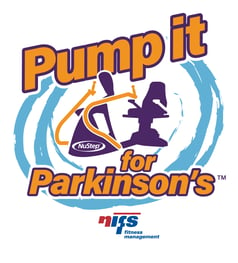


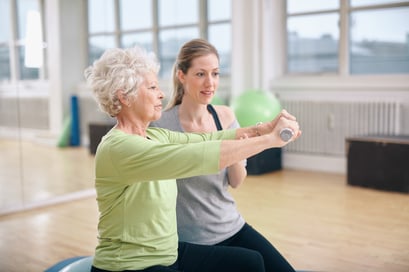 Working on one’s strength, agility, form, balance and flexibility are all so very important. Building/working on one’s strength helps prevent or lessen an injury. Using weights helps to strengthen the muscles. That being said, working the same muscles every day is not beneficial. Muscles need time to recover. Doing repetitive movements breaks the muscles down and causes wear and tear which leads to injury.
Working on one’s strength, agility, form, balance and flexibility are all so very important. Building/working on one’s strength helps prevent or lessen an injury. Using weights helps to strengthen the muscles. That being said, working the same muscles every day is not beneficial. Muscles need time to recover. Doing repetitive movements breaks the muscles down and causes wear and tear which leads to injury. 
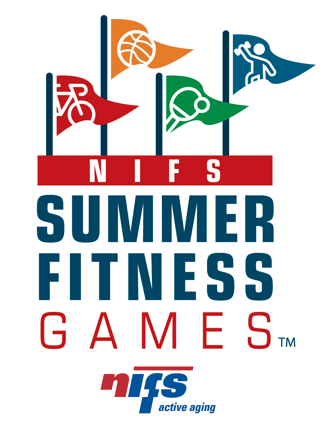 Every 4 (or 5) years a special summer event comes around that makes us all want to feel like an athlete. This year, residents in CCRCs from Minnesota to Florida showed that they have what it takes to compete in the NIFS Summer Games. NIFS fitness staff put together 8-10 different events that residents could compete in over the course of the Games. On the surface, this program looked like a way to celebrate the summer, but there was certainly more intention behind the design.
Every 4 (or 5) years a special summer event comes around that makes us all want to feel like an athlete. This year, residents in CCRCs from Minnesota to Florida showed that they have what it takes to compete in the NIFS Summer Games. NIFS fitness staff put together 8-10 different events that residents could compete in over the course of the Games. On the surface, this program looked like a way to celebrate the summer, but there was certainly more intention behind the design.
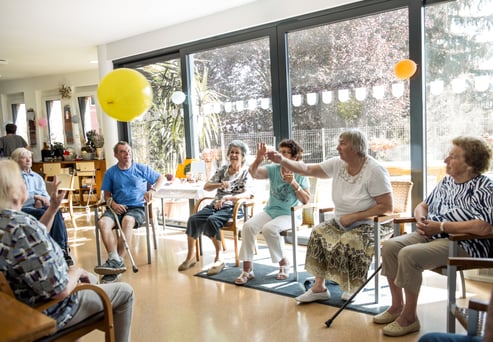 Throughout the past year, everyone’s wellness routine has been thrown upside down at some point or another. Maybe you figured out what your ‘new norm’ looks like, you are not sure where to start, or you are somewhere in the middle trying to find that new norm. A lot of the residents at the senior living community where I am employed are unsure of where to start, specifically after the pandemic.
Throughout the past year, everyone’s wellness routine has been thrown upside down at some point or another. Maybe you figured out what your ‘new norm’ looks like, you are not sure where to start, or you are somewhere in the middle trying to find that new norm. A lot of the residents at the senior living community where I am employed are unsure of where to start, specifically after the pandemic..jpg?width=408&name=GettyImages-494388997%20(1).jpg) It should come as no surprise that most people aim to improve their lives in one way or another with the start of a new year. Particularly when it comes to focusing on better health and fitness, January’s clean slate seems to be the ideal time to get back on track and into shape immediately following the busy holiday season and prolonged period of indulgence. This seems to be a universal practice as we have found that to be no exception for our members and residents in senior living communities!
It should come as no surprise that most people aim to improve their lives in one way or another with the start of a new year. Particularly when it comes to focusing on better health and fitness, January’s clean slate seems to be the ideal time to get back on track and into shape immediately following the busy holiday season and prolonged period of indulgence. This seems to be a universal practice as we have found that to be no exception for our members and residents in senior living communities!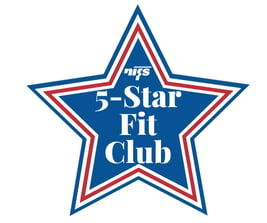
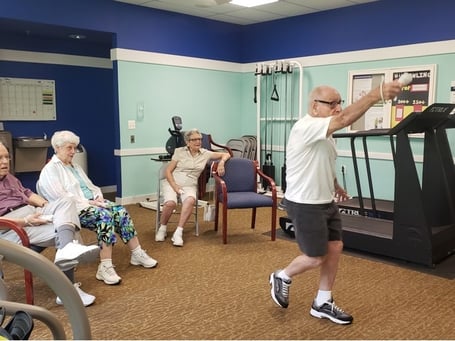 This summer, teams all around the country ironed their bowling shirts, warmed up their throwing arms, and double-checked their TV connections in preparation for the first-ever 10-week session of the NIFS Wii Bowling League.
This summer, teams all around the country ironed their bowling shirts, warmed up their throwing arms, and double-checked their TV connections in preparation for the first-ever 10-week session of the NIFS Wii Bowling League.
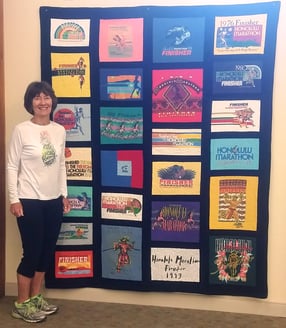
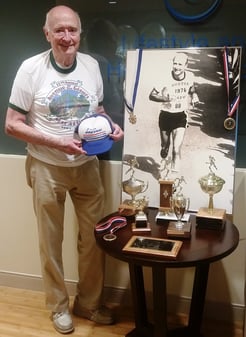 Shortly after Dan graduated from MIT, he married the love of his life, Portia, and they moved to Southern California where he began taking classes at USC and started work at the Hughes Research Laboratory. He's had quite a career - not only did he play
Shortly after Dan graduated from MIT, he married the love of his life, Portia, and they moved to Southern California where he began taking classes at USC and started work at the Hughes Research Laboratory. He's had quite a career - not only did he play 

